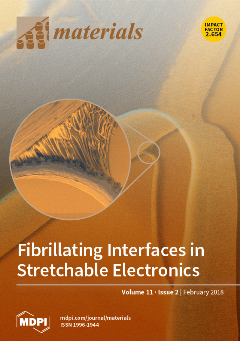Fe
3O
4 nanoparticles (NPs), the most traditional magnetic nanoparticles, have received a great deal of attention in the biomedical field, especially for targeted drug/gene delivery systems, due to their outstanding magnetism, biocompatibility, lower toxicity, biodegradability, and other features. Naked Fe
3
[...] Read more.
Fe
3O
4 nanoparticles (NPs), the most traditional magnetic nanoparticles, have received a great deal of attention in the biomedical field, especially for targeted drug/gene delivery systems, due to their outstanding magnetism, biocompatibility, lower toxicity, biodegradability, and other features. Naked Fe
3O
4 NPs are easy to aggregate and oxidize, and thus are often made with various coatings to realize superior properties for targeted drug/gene delivery. In this review, we first list the three commonly utilized synthesis methods of Fe
3O
4 NPs, and their advantages and disadvantages. In the second part, we describe coating materials that exhibit noticeable features that allow functionalization of Fe
3O
4 NPs and summarize their methods of drug targeting/gene delivery. Then our efforts will be devoted to the research status and progress of several different functionalized Fe
3O
4 NP delivery systems loaded with chemotherapeutic agents, and we present targeted gene transitive carriers in detail. In the following section, we illuminate the most effective treatment systems of the combined drug and gene therapy. Finally, we propose opportunities and challenges of the clinical transformation of Fe
3O
4 NPs targeting drug/gene delivery systems.
Full article






